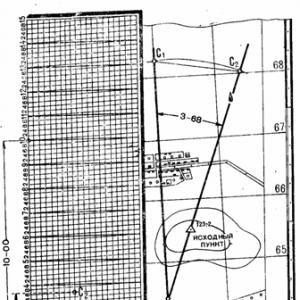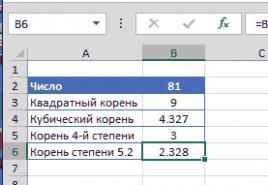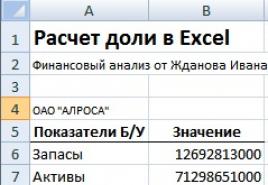Chemistry exam options dunno. Online Gia Chemistry Tests
The state final certification of 2019 in chemistry for graduates of the 9th grade of general educational institutions is carried out in order to assess the level of general education of graduates in this discipline. The tasks test knowledge of the following sections of chemistry:
- The structure of the atom.
- Periodic law and Periodic system of chemical elements D.I. Mendeleev.
- The structure of molecules. Chemical bond: covalent (polar and non-polar), ionic, metallic.
- Valency of chemical elements. The degree of oxidation of chemical elements.
- Simple and complex substances.
- Chemical reaction. Conditions and signs of chemical reactions. Chemical equations.
- Electrolytes and non-electrolytes. Cations and anions. Electrolytic dissociation of acids, alkalis and salts (medium).
- Ion exchange reactions and conditions for their implementation.
- Chemical properties of simple substances: metals and non-metals.
- Chemical properties of oxides: basic, amphoteric, acidic.
- Chemical properties of bases. Chemical properties of acids.
- Chemical properties of salts (medium).
- Pure substances and mixtures. Rules for safe work in the school laboratory. Chemical pollution of the environment and its consequences.
- The degree of oxidation of chemical elements. Oxidizing agent and reducing agent. Redox reactions.
- Calculation of the mass fraction of a chemical element in a substance.
- Periodic law D.I. Mendeleev.
- Initial information about organic substances. Biologically important substances: proteins, fats, carbohydrates.
- Determination of the nature of the medium of a solution of acids and alkalis using indicators. Qualitative reactions to ions in solution (chloride, sulfate, carbonation, ammonium ion). Qualitative reactions to gaseous substances (oxygen, hydrogen, carbon dioxide, ammonia).
- Chemical properties of simple substances. Chemical properties of complex substances.
| Date of passing the OGE in chemistry 2019: June 4 (Tuesday). |
There are no changes in the structure and content of the examination paper in 2019 compared to 2018. |
The standard OGE test (GIA-9) of the 2019 format in chemistry consists of two parts. The first part contains 19 tasks with a short answer, the second part contains 3 tasks with a detailed answer. In this regard, only the first part (i.e., the first 19 tasks) is presented in this test. According to the current structure of the exam, among these tasks, only 15 answers are offered. However, for the convenience of passing the tests, the site administration decided to offer answers in all tasks. But for tasks in which answer options are not provided by the compilers of real control and measuring materials (KIMs), the number of answer options has been significantly increased in order to bring our test as close as possible to what you will have to face at the end of the school year.
The standard OGE test (GIA-9) of the 2019 format in chemistry consists of two parts. The first part contains 19 tasks with a short answer, the second part contains 3 tasks with a detailed answer. In this regard, only the first part (i.e., the first 19 tasks) is presented in this test. According to the current structure of the exam, among these tasks, only 15 answers are offered. However, for the convenience of passing the tests, the site administration decided to offer answers in all tasks. But for tasks in which answer options are not provided by the compilers of real control and measuring materials (KIMs), the number of answer options has been significantly increased in order to bring our test as close as possible to what you will have to face at the end of the school year.
The standard OGE test (GIA-9) of the 2018 format in chemistry consists of two parts. The first part contains 19 tasks with a short answer, the second part contains 3 tasks with a detailed answer. In this regard, only the first part (i.e., the first 19 tasks) is presented in this test. According to the current structure of the exam, among these tasks, only 15 answers are offered. However, for the convenience of passing the tests, the site administration decided to offer answers in all tasks. But for tasks in which answer options are not provided by the compilers of real control and measuring materials (KIMs), the number of answer options has been significantly increased in order to bring our test as close as possible to what you will have to face at the end of the school year.
The standard OGE test (GIA-9) of the 2018 format in chemistry consists of two parts. The first part contains 19 tasks with a short answer, the second part contains 3 tasks with a detailed answer. In this regard, only the first part (i.e., the first 19 tasks) is presented in this test. According to the current structure of the exam, among these tasks, only 15 answers are offered. However, for the convenience of passing the tests, the site administration decided to offer answers in all tasks. But for tasks in which answer options are not provided by the compilers of real control and measuring materials (KIMs), the number of answer options has been significantly increased in order to bring our test as close as possible to what you will have to face at the end of the school year.
The standard OGE test (GIA-9) of the 2018 format in chemistry consists of two parts. The first part contains 19 tasks with a short answer, the second part contains 3 tasks with a detailed answer. In this regard, only the first part (i.e., the first 19 tasks) is presented in this test. According to the current structure of the exam, among these tasks, only 15 answers are offered. However, for the convenience of passing the tests, the site administration decided to offer answers in all tasks. But for tasks in which answer options are not provided by the compilers of real control and measuring materials (KIMs), the number of answer options has been significantly increased in order to bring our test as close as possible to what you will have to face at the end of the school year.
The standard OGE test (GIA-9) of the 2018 format in chemistry consists of two parts. The first part contains 19 tasks with a short answer, the second part contains 3 tasks with a detailed answer. In this regard, only the first part (i.e., the first 19 tasks) is presented in this test. According to the current structure of the exam, among these tasks, only 15 answers are offered. However, for the convenience of passing the tests, the site administration decided to offer answers in all tasks. But for tasks in which answer options are not provided by the compilers of real control and measuring materials (KIMs), the number of answer options has been significantly increased in order to bring our test as close as possible to what you will have to face at the end of the school year.
The standard OGE test (GIA-9) of the 2017 format in chemistry consists of two parts. The first part contains 19 tasks with a short answer, the second part contains 3 tasks with a detailed answer. In this regard, only the first part (i.e., the first 19 tasks) is presented in this test. According to the current structure of the exam, among these tasks, only 15 answers are offered. However, for the convenience of passing the tests, the site administration decided to offer answers in all tasks. But for tasks in which answer options are not provided by the compilers of real control and measuring materials (KIMs), the number of answer options has been significantly increased in order to bring our test as close as possible to what you will have to face at the end of the school year.
The standard OGE test (GIA-9) of the 2016 format in chemistry consists of two parts. The first part contains 19 tasks with a short answer, the second part contains 3 tasks with a detailed answer. In this regard, only the first part (i.e., the first 19 tasks) is presented in this test. According to the current structure of the exam, among these tasks, only 15 answers are offered. However, for the convenience of passing the tests, the site administration decided to offer answers in all tasks. But for tasks in which answer options are not provided by the compilers of real control and measuring materials (KIMs), the number of answer options has been significantly increased in order to bring our test as close as possible to what you will have to face at the end of the school year.
The standard OGE test (GIA-9) of the 2016 format in chemistry consists of two parts. The first part contains 19 tasks with a short answer, the second part contains 3 tasks with a detailed answer. In this regard, only the first part (i.e., the first 19 tasks) is presented in this test. According to the current structure of the exam, among these tasks, only 15 answers are offered. However, for the convenience of passing the tests, the site administration decided to offer answers in all tasks. But for tasks in which answer options are not provided by the compilers of real control and measuring materials (KIMs), the number of answer options has been significantly increased in order to bring our test as close as possible to what you will have to face at the end of the school year.
The standard OGE test (GIA-9) of the 2016 format in chemistry consists of two parts. The first part contains 19 tasks with a short answer, the second part contains 3 tasks with a detailed answer. In this regard, only the first part (i.e., the first 19 tasks) is presented in this test. According to the current structure of the exam, among these tasks, only 15 answers are offered. However, for the convenience of passing the tests, the site administration decided to offer answers in all tasks. But for tasks in which answer options are not provided by the compilers of real control and measuring materials (KIMs), the number of answer options has been significantly increased in order to bring our test as close as possible to what you will have to face at the end of the school year.
The standard OGE test (GIA-9) of the 2016 format in chemistry consists of two parts. The first part contains 19 tasks with a short answer, the second part contains 3 tasks with a detailed answer. In this regard, only the first part (i.e., the first 19 tasks) is presented in this test. According to the current structure of the exam, among these tasks, only 15 answers are offered. However, for the convenience of passing the tests, the site administration decided to offer answers in all tasks. But for tasks in which answer options are not provided by the compilers of real control and measuring materials (KIMs), the number of answer options has been significantly increased in order to bring our test as close as possible to what you will have to face at the end of the school year.
The standard OGE test (GIA-9) of the 2015 format in chemistry consists of two parts. The first part contains 19 tasks with a short answer, the second part contains 3 tasks with a detailed answer. In this regard, only the first part (i.e., the first 19 tasks) is presented in this test. According to the current structure of the exam, among these tasks, only 15 answers are offered. However, for the convenience of passing the tests, the site administration decided to offer answers in all tasks. But for tasks in which answer options are not provided by the compilers of real control and measuring materials (KIMs), the number of answer options has been significantly increased in order to bring our test as close as possible to what you will have to face at the end of the school year.
The standard OGE test (GIA-9) of the 2015 format in chemistry consists of two parts. The first part contains 19 tasks with a short answer, the second part contains 3 tasks with a detailed answer. In this regard, only the first part (i.e., the first 19 tasks) is presented in this test. According to the current structure of the exam, among these tasks, only 15 answers are offered. However, for the convenience of passing the tests, the site administration decided to offer answers in all tasks. But for tasks in which answer options are not provided by the compilers of real control and measuring materials (KIMs), the number of answer options has been significantly increased in order to bring our test as close as possible to what you will have to face at the end of the school year.
The standard OGE test (GIA-9) of the 2015 format in chemistry consists of two parts. The first part contains 19 tasks with a short answer, the second part contains 3 tasks with a detailed answer. In this regard, only the first part (i.e., the first 19 tasks) is presented in this test. According to the current structure of the exam, among these tasks, only 15 answers are offered. However, for the convenience of passing the tests, the site administration decided to offer answers in all tasks. But for tasks in which answer options are not provided by the compilers of real control and measuring materials (KIMs), the number of answer options has been significantly increased in order to bring our test as close as possible to what you will have to face at the end of the school year.
When completing tasks A1-A19, select only one correct option.
When completing tasks B1-B3, select two correct options.
When completing tasks A1-A15, select only one correct option.
When completing tasks A1-A15, choose only one correct option.
For 2-3 months it is impossible to learn (repeat, pull up) such a complex discipline as chemistry.
There are no changes in KIM USE 2020 in chemistry.
Don't delay your preparation.
- Before starting the analysis of tasks, first study theory. The theory on the site is presented for each task in the form of recommendations that you need to know when completing the task. guides in the study of the main topics and determines what knowledge and skills will be required when completing the USE tasks in chemistry. For the successful passing of the exam in chemistry, theory is the most important thing.
- Theory needs to be backed up practice constantly solving problems. Since most of the errors are due to the fact that I read the exercise incorrectly, I did not understand what is required in the task. The more often you solve thematic tests, the faster you will understand the structure of the exam. Training tasks developed on the basis of demos from FIPI give them the opportunity to decide and find out the answers. But do not rush to peek. First, decide for yourself and see how many points you have scored.
Points for each task in chemistry
- 1 point - for 1-6, 11-15, 19-21, 26-28 tasks.
- 2 points - 7-10, 16-18, 22-25, 30, 31.
- 3 points - 35.
- 4 points - 32, 34.
- 5 points - 33.
Total: 60 points.
The structure of the examination paper consists of two blocks:
- Questions that require a short answer (in the form of a number or word) - tasks 1-29.
- Tasks with detailed answers - tasks 30-35.
3.5 hours (210 minutes) are allotted to complete the examination paper in chemistry.
There will be three cheat sheets on the exam. And they need to be dealt with.
This is 70% of the information that will help you successfully pass the exam in chemistry. The remaining 30% is the ability to use the provided cheat sheets.
- If you want to get more than 90 points, you need to spend a lot of time on chemistry.
- To successfully pass the exam in chemistry, you need to solve a lot: training tasks, even if they seem easy and of the same type.
- Correctly distribute your strength and do not forget about the rest.
Dare, try and you will succeed!
Chemistry is not the most suitable subject for testing knowledge in a test format. The test implies answer options, while the correct answer becomes obvious, or doubts arise due to close answer options. This makes it very difficult for the student to concentrate and answer questions. Of course, it is much easier for Losers to pass chemistry in the USE format than with the classic version. But for the rest of the USE students in chemistry, it became a big problem.
How to pass the exam in chemistry well?
As with any exam, the exam in chemistry requires careful preparation. Answering a test question requires precise knowledge, not approximate numbers, which are enough for a classic answer. If in writing a reaction by hand the conditions can be written in a range, then the exam requires an exact answer to the question posed. Therefore, preparing for the exam in chemistry is somewhat different from preparing for other exams. First of all, the role of practice and readiness for such issues is increasing. It is best to be able to teach to take the exam at preparatory courses at the institute. Professors who could take part in the preparation of assignments take part in the training. Therefore, they know better than anyone the subtleties of the questions, and the prepared traps that tend to bring down the student. But not everyone has the opportunity to attend expensive courses. In addition, some do not necessarily have a high score in chemistry, but they need to pass the exam.
Online USE tests - a type of self-preparation for the exam
In such cases, cooking itself comes to the fore. Even the school cannot provide the student with sufficient preparation for such a difficult exam. All responsibility lies with the student. One of the best ways to self-study are online USE tests. On the educational portal of the site, you can take an online USE test in chemistry to prepare yourself for the upcoming exam. Online tests on our website are different in that you do not need to register or enter any personal data to pass. The online exam is available to everyone an unlimited number of times. Another advantage is unlimited time. If you are faced with a difficult question, you can open the textbook or search the Internet for the answer to the question. In this way, gaps in knowledge can be identified and eliminated. Also, constant training allows you to get used to the USE format and learn how to draw exactly the exact knowledge from textbooks that is necessary to answer exam questions.
There are many professions that are related to chemistry, and they are more and more in demand every year. If you choose Chemistry as a subject of the Unified State Examination, then remember that it is not so easy to pass it with an excellent score - it is not enough just to learn the theory. Get ready to perform practical tasks, to understand the inextricable connection between theory and practice in this complex, but wonderful, very interesting subject. Two months is definitely not enough - start preparing in advance!
What will be the changes
In 2020, there will be no changes in the structure of the exam in chemistry. There is no need to worry about this topic, it is better to learn from the experience of past years and work hard.
The examination paper contains two parts.
First part: for short answers. These are tasks 1-29.
Second: for detailed answers, questions 30-35.
You need to complete all tasks in 210 minutes. It's not too long, you have to try.
Let's see how points for correct answers will be distributed:
30, 31, 32, 33, 34 are tasks of high difficulty.
What is allowed to take with you
You can bring a calculator to the exam without programming. Of course, there can be no talk of cheat sheets - a student can be kicked out of the exam for using them. But you should not be afraid that you will have to memorize a huge number of numbers - during the exam, each student will be given "tips" that will reduce this problem to nothing, namely:
- periodic table
- Solubility table
- A series of stress metals.
How to prepare for the exam in chemistry 2020
It is already clear that discipline is not easy. In order not to sit in a puddle during the test, prepare in advance. The most convenient and effective way is to use USE tests in chemistry. This allows you to imagine a real exam, try to fit in the allotted time, feel the volume of tasks. It is convenient that you can immediately see the correct answer in order to understand how the testing is going. Try not to leave before the set time.
Constant problem solving is necessary to reinforce theory with practice. Graduates make many mistakes by misunderstanding the conditions of the problem. Thematic tests provide an opportunity to understand the structure of the exam and adapt your psyche to the future test.
- Take your time, if you decide to take chemistry, pay special attention to it. Only then will it be possible later not to lament about the wasted evenings.
- Decide options, be persistent, Ignore other people's opinions, go ahead. Today you can find test and on the Internet in the public domain, this facilitates the preparation. Imagine, after all, before schoolchildren had to study exclusively from paper textbooks.
- Work hard, but don't forget to rest. Be sure to get enough sleep. Share your successes with friends, get them involved in the process, arrange small competitions.
We wish you good luck and successful admission to the university!

Demonstration options for the exam in chemistry for grade 11 consist of two parts. The first part includes tasks to which you need to give a short answer. To the tasks from the second part it is necessary to give a detailed answer.
All demonstration versions of the exam in chemistry contain correct answers to all tasks and assessment criteria for tasks with a detailed answer.
AT demo version of the USE 2020 in chemistry compared with demo 2019 in chemistry no changes.
Demonstration options for the exam in chemistry
Note that chemistry demos are presented in pdf format, and in order to view them you need to have installed, for example, the freely distributed Adobe Reader software package on your computer.
| Demonstration version of the exam in chemistry for 2002 | |
| Demonstration version of the exam in chemistry for 2004 | |
| Demonstration version of the exam in chemistry for 2005 | |
| Demonstration version of the exam in chemistry for 2006 | |
| Demonstration version of the exam in chemistry for 2007 | |
| Demonstration version of the exam in chemistry for 2008 | |
| Demonstration version of the exam in chemistry for 2009 | |
| Demonstration version of the exam in chemistry for 2010 | |
| Demonstration version of the exam in chemistry for 2011 | |
| Demonstration version of the exam in chemistry for 2012 | |
| Demonstration version of the exam in chemistry for 2013 | |
| Demonstration version of the exam in chemistry for 2014 | |
| Demonstration version of the exam in chemistry for 2015 | |
| Demonstration version of the exam in chemistry for 2016 | |
| Demonstration version of the exam in chemistry for 2017 | |
| Demonstration version of the exam in chemistry for 2018 | |
| Demonstration version of the exam in chemistry for 2019 | |
| Demonstration version of the exam in chemistry for 2020 |
Changes in the demonstration versions of the exam in chemistry
Demonstration versions of the exam in chemistry for grade 11 for 2002 - 2014 consisted of three parts. The first part included tasks in which you need to choose one of the proposed answers. The tasks from the second part were required to give a short answer. To the tasks from the third part it was necessary to give a detailed answer.
In 2014 in demonstration version of the exam in chemistry the following changes:
- all calculation tasks, the performance of which was estimated at 1 point, were placed in part 1 of the work (A26-A28),
- topic "Redox Reactions" tested with assignments IN 2 and C1;
- topic "Hydrolysis of salts" checked only with the task AT 4;
- a new task has been included(in position AT 6) to check the topics "qualitative reactions to inorganic substances and ions", "qualitative reactions of organic compounds"
- total number of jobs in each variant was 42 (instead of 43 in the work of 2013).
In 2015, there were fundamental changes have been made:
- The grading system has been changed. tasks for finding the molecular formula of a substance. The maximum score for its implementation - 4 (instead of 3 points in 2014).
Option became be in two parts(part 1 - short answer questions, part 2 - open-ended questions).
Numbering assignments has become through throughout the variant without letter designations A, B, C.
Was the form of recording the answer in tasks with a choice of answers has been changed: the answer has become necessary to write down the number with the number of the correct answer (and not mark with a cross).
It was the number of tasks of the basic level of complexity has been reduced from 28 to 26 tasks.
Maximum score for completing all the tasks of the examination paper in 2015 became 64 (instead of 65 points in 2014).
AT 2016 year in demo in chemistrysignificant changes have been made compared to the previous year 2015 :
Part 1 changed the format of tasks 6, 11, 18, 24, 25 and 26 basic level of difficulty with a short answer.
Changed the format of tasks 34 and 35 increased level of complexity : these tasks now require you to match instead of selecting multiple correct answers from a suggested list.
The distribution of tasks by difficulty level and types of skills being tested has been changed.
In 2017 compared to demo version of 2016 in chemistrythere have been significant changes. The structure of the examination paper has been optimized:
Was changed the structure of the first part demo version: tasks with a choice of one answer were excluded from it; tasks were grouped into separate thematic blocks, each of which began to contain tasks of both basic and advanced levels of complexity.
It was reduced the total number of tasks up to 34.
Was grading scale changed(from 1 to 2 points) completing tasks of the basic level of complexity, which test the assimilation of knowledge about the genetic relationship of inorganic and organic substances (9 and 17).
Maximum score for the completion of all tasks of the examination paper was reduced to 60 points.
In 2018 in demo version of the exam in chemistry compared with demo version of 2017 in chemistry the following changes:
It was task 30 added high level of complexity with a detailed answer,
Maximum score for the completion of all tasks of the examination work remained without change by changing the scale for grading tasks in part 1.
AT demonstration versions of the Unified State Exam 2019 - 2020 in chemistry compared with demo version of 2018 in chemistry there were no changes.







